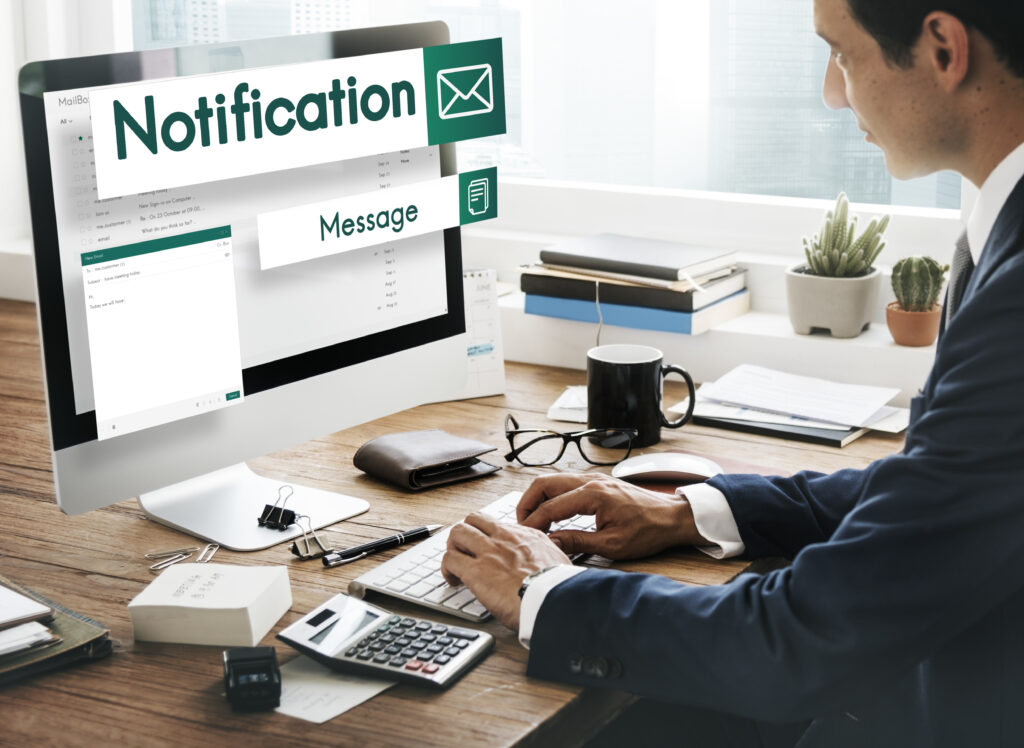Artificial Intelligence (AI) is revolutionizing the way we communicate, and one of its remarkable applications is in the realm of email writing. AI email writers are tools that leverage machine learning and natural language processing to craft emails that are not only coherent but also engaging. In this comprehensive guide, we will explore the top AI email writing tools, their benefits, and effective methods to spot AI-written emails. This guide aims to provide valuable insights and practical information for anyone interested in enhancing their email communication strategies.
The Best AI Tools for Email Writing
1. Grammarly
Grammarly is more than just a grammar checker. It’s an AI-powered tool that helps you craft polished, error-free emails. With features like tone detection, style suggestions, and full-sentence rewrites, Grammarly ensures your emails are clear and impactful. It’s ideal for both personal and professional use, making your communication more effective.
2. Jasper (formerly Jarvis)
Jasper is a robust AI writing assistant that excels in generating high-quality email content quickly. Whether you need persuasive marketing emails or professional correspondence, Jasper uses advanced natural language processing to produce relevant and engaging text. This tool is particularly beneficial for sales and marketing professionals.
3. Copy.ai
Copy.ai specializes in creating compelling email content with a wide range of templates and customization options. It’s user-friendly and perfect for businesses looking to streamline their email writing process. Copy.ai’s ability to generate personalized content helps in crafting emails that resonate with your audience.
4. Writesonic
Writesonic is an AI tool known for generating creative and engaging emails. It understands the nuances of human language and produces emails that captivate recipients. Writesonic is ideal for entrepreneurs, marketers, and content creators aiming to enhance their email campaigns.
5. ChatGPT
ChatGPT, developed by OpenAI, is a versatile AI tool that excels in generating human-like text. It can assist in crafting personalized and engaging emails by understanding the context and purpose of your communication. ChatGPT is highly adaptable and can be used for various email writing needs, from professional correspondence to marketing campaigns.

Benefits of Using AI Email Writers
The adoption of AI email writers brings numerous benefits that can significantly enhance your email communication efforts. Here are some key advantages:
1. Time Efficiency
One of the most significant benefits of AI email writers is the time they save. By automating the email writing process, these tools allow you to focus on more strategic tasks, increasing overall productivity. Whether you need to draft a quick response or create a detailed email campaign, AI email writers can deliver quality content in a fraction of the time it would take manually.
2. Consistency and Quality
AI email writers ensure consistency and quality in your email communications. By leveraging machine learning, these tools can maintain a consistent tone, style, and formatting across all your emails. This is particularly beneficial for businesses that need to uphold a professional image and maintain a brand voice in their communications.
3. Personalization
AI email writers can generate personalized email content that caters to individual recipients. By analyzing recipient data and preferences, these tools can craft emails that resonate on a personal level, increasing the likelihood of engagement and response. Personalized emails can help build stronger relationships with clients, customers, and colleagues.
4. Improved Engagement
Emails generated by AI writers are often more engaging and compelling. By using advanced language models, these tools can create content that captures attention and drives action. Whether it’s a marketing email or a follow-up message, AI-generated emails are designed to maximize engagement and achieve desired outcomes.
How to Spot AI-Written Emails
While AI email writers offer numerous benefits, it’s essential to be able to identify AI-written emails to ensure authenticity and maintain trust. Here are some methods to spot AI-written emails:
1. Language Patterns
AI-generated emails may exhibit certain language patterns that differ from human writing. Look for overly formal or generic language, as AI tools often use predefined templates. Additionally, pay attention to repetitive phrases or sentence structures that might indicate machine-generated content.
2. Lack of Personal Touch
AI-written emails may lack the personal touch and emotional nuance that human writers naturally incorporate. If an email feels impersonal or lacks specific details related to the recipient, it might be AI-generated. Human writers often include personal anecdotes or references that AI tools may overlook.
3. Inconsistencies
Inconsistencies in tone, style, or formatting can be a sign of AI-written emails. AI tools may struggle to maintain a consistent voice throughout the email, leading to abrupt shifts in tone. Additionally, look for formatting errors or unusual sentence structures that may indicate machine-generated content.
4. Unnatural Phrasing
AI-generated emails may contain unnatural phrasing or awkward sentence constructions. While AI tools are continually improving, they can still produce text that feels slightly off or robotic. Trust your instincts—if an email doesn’t read naturally, it might be AI-generated.
How to Use AI to Write Emails
Using AI to write emails can be straightforward and highly effective if done correctly. Here are some steps to make the most out of AI email writers:
1. Define Your Purpose
Before using an AI tool, clearly define the purpose of your email. Are you reaching out for sales, customer support, or personal communication? Understanding the goal will help the AI generate more targeted content.
2. Input Relevant Data
Provide the AI tool with relevant data such as recipient information, key points to cover, and the desired tone. The more information you give, the better the AI can tailor the email to your needs.
3. Review and Edit
AI tools are excellent at generating content, but it’s crucial to review and edit the output. Ensure the email aligns with your voice and correct any contextual inaccuracies.
4. Personalize
Even with AI, personalization is key. Add personal touches like the recipient’s name, specific references, or anecdotes to make the email feel more authentic and engaging.
Free AI Tools for Email Writing and Sending
While premium AI tools offer advanced features, there are also free options available that can help you get started with AI email writing.
1. Zoho Writer
Zoho Writer is a free tool that offers AI-powered writing assistance. It can help with grammar, style, and structure, making it a useful tool for crafting emails.
2. Rytr
Rytr is a free AI writing tool that can generate email content quickly. It offers various templates and customization options to suit different needs.
3. Slick Write
Slick Write is a free tool that focuses on improving your writing quality. It provides detailed feedback on grammar, style, and readability, helping you write better emails.
How to Tell if an Email Was Written by AI
While AI-generated emails can be highly effective, it’s essential to identify them to maintain trust and authenticity in communication. Here are some methods to spot AI-written emails:
1. Language Patterns
AI-generated emails may have overly formal or generic language. Look for repetitive phrases or sentence structures that differ from natural human writing.
2. Lack of Personal Touch
AI emails may lack personal anecdotes or specific details related to the recipient. If an email feels impersonal, it might be AI-generated.
3. Inconsistencies
Look for inconsistencies in tone, style, or formatting. AI tools might struggle to maintain a consistent voice, leading to abrupt shifts in the email.
4. Unnatural Phrasing
AI-generated content can sometimes have awkward or unnatural phrasing. Trust your instincts—if an email doesn’t read naturally, it might be AI-written.
Adding Authenticity to Communication
Despite the benefits of AI, adding authenticity to your emails is crucial for building trust and maintaining strong relationships. Here are some tips:
1. Personalize Your Emails
Include the recipient’s name, specific references, and personal anecdotes. Personalization shows that you value the recipient and are genuinely interested in the communication.
2. Maintain a Consistent Voice
Ensure your emails reflect your brand’s voice and personality. Consistency helps in building a recognizable and trustworthy image.
3. Be Transparent
If you’re using AI tools, be transparent about it. Let your recipients know that you’re using AI to enhance your communication but that you’re still personally involved in the process.
4. Add Human Touches
Incorporate elements like humor, empathy, and genuine compliments. These human touches can make your emails more relatable and engaging.
Conclusion
In the ever-evolving landscape of digital communication, AI email writers have emerged as powerful tools to enhance efficiency, consistency, and personalization. By exploring top AI tools like Grammarly, Jasper, Copy.ai, Writesonic, and ChatGPT, you can significantly improve your email writing process, saving time and delivering high-quality content. However, it is crucial to maintain authenticity and a personal touch to build trust and foster strong relationships with your audience. Embrace the benefits of AI while staying vigilant about maintaining genuine, human connections in your communications. As AI continues to advance, leveraging these tools effectively will become a key differentiator in achieving successful and engaging email correspondence.
